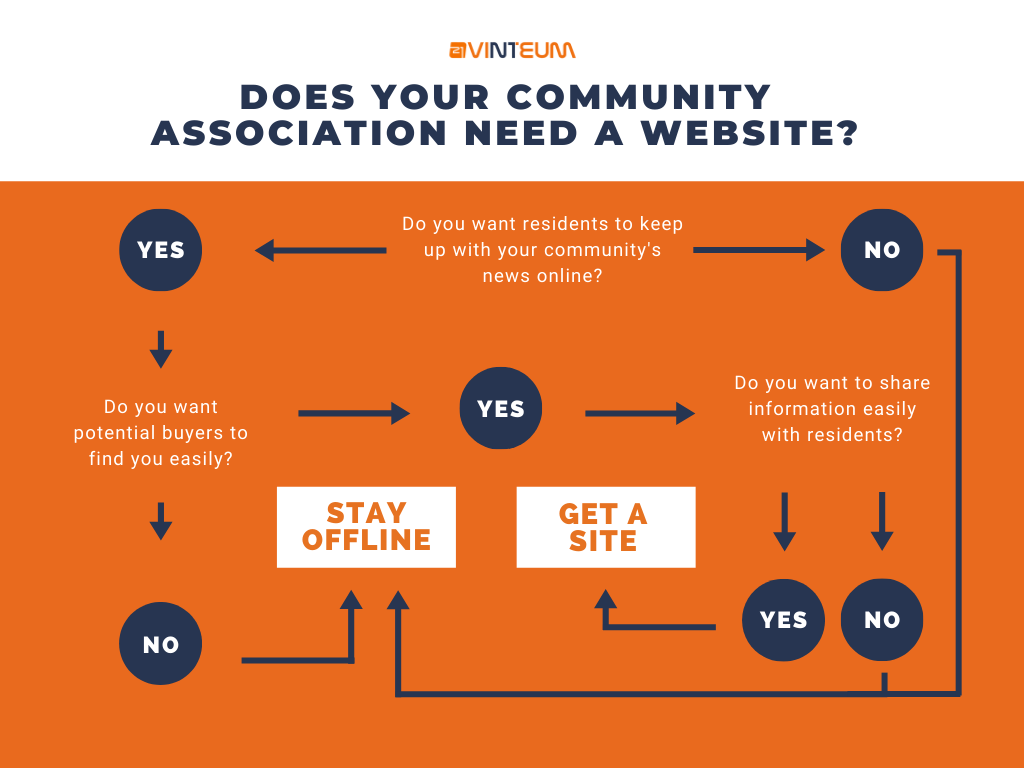After another long, frustrating board meeting, the board’s vice president Sara drew Mia to one side and confessed that she was seriously considering quitting the board.
Mia completely understood, she had taken on the role of board secretary because she wanted to help improve community life. She did her very best to post notices on the bulletin boards, make meeting agendas, and write down the minutes. But even so, she had lost count of how many people had complained that they didn’t know what was going on or how to find information. It was tiring.
The past secretary had given her boxes of documents that were sitting in her spare room, and she hadn’t managed to sort through them properly yet.
When she got home, she called her friend Fernando who had been elected treasurer of an HOA nearby. She complained to him about how tiring it was being the secretary, and how meetings were long and frustrating. He was sympathetic and told her that while it was an extra responsibility, having website software was making his life a lot easier. They posted meeting notices on the bulletin board, and online. All their documents were online, and maintenance requests could be posted in their portal.
A website for HOA members? Thought Mia, that was exactly the kind of change she wanted to bring to her HOA.
What about the risks of having a website for HOA members?
When Mia took the idea to the next board meeting, there were concerns about sensitive information being available and it becoming a place where people just complain about the community.
Sensitive Information
A website can be risky if you put sensitive information on it. Remember that your website is a page that anyone can find on Google, like this one. So you do want to think about what you put on it. You should post governing documents, meeting agendas, and minutes. As well as those documents, news, events, and possibly public contacts, such as your manager and the police are all important.
For instance, if the board and your attorney agree that you should put all your financial documents on your website, that’s a risk. Anyone can find that and download it, but the benefits may outweigh the benefits and if so, that’s great.
However, it’s important to discuss what would be available and who could access it.
Open Forum
Another risk would be having an open forum where all residents can post. It could turn nasty with residents arguing or complaining. If having an open forum is important to your association, then you can include a disclaimer message saying that it’s not moderated 24/7. However, it would be better to use your public website for information from the board and manager to HOA members. Once again, it depends on your community’s priorities and what you want from your new website.
What’s the ideal solution?
The best thing to have is to have a public website that presents the HOA to the world, and a password-protected portal where you can post more sensitive information for residents. Inside that, you can have locked folders just for board and committee members. In your portal, you could have a social network where residents have a forum with clearly defined rules on what is and isn’t allowed. Using a password-protected area, you can also contact residents directly through email, chat, text, and calls if you wish. As well as communication you could manage maintenance requests and payments if you would like to.
What should my HOA website have and why?
Mia and the other board members talked about the risks and how they would mitigate them. Then they started to think about what else their website would need to have.
1. It should be senior-friendly
Your HOA website needs to be helpful for all ages and types of people. So it needs to be easy to use. That means that it should have high-contrast colors (eg black and white) to make it easy to read. It should also be easy to find your way around, the menu items should be descriptive and it should be easy to go back. Even if you think that seniors won’t use the website, if it’s easy to navigate, it increases the chances of them using it.
2. Your website should answer questions quickly
A website for HOA members has to make life easier for residents and board members. If a resident wants to find the ARC application form, they should be able to find it on their HOA’s website quickly and easily. This cuts down on residents’ frustration and how much time the manager and board members spend answering the same questions. It’s a win-win!
So when you’re making your website, do include residents in the process. Maybe create a focus group so that they can view the site and see what it’s missing.
3. It should have key documents
A community’s association documents are the community’s basis. If a resident wants to contest a fine, they need to read the rules. Another example would be booking the clubhouse, they may have to complete a form, and they need to know where it is. If they don’t, they will feel excluded from using it and get frustrated. It’s up to the board to have these documents easily accessible and communicate where they are.
Including documents on your website, or password-protected portal is a huge advantage. It keeps documents safe in the cloud, and in one place. It also eliminates the problem of disorganized boxes of documents that are stored in someone’s garage.
4. Your HOA website should be updated regularly
Just having a website for HOA members isn’t enough. Residents need to actually use it, and a great way to encourage them to do that is for the board and management to use it. That means that you should post HOA meeting notices there, and send regular newsletters or emails from the portal. When there’s an event coming up, add it to the calendar. If you use it, then residents will come to rely on it too because they will see that it is helpful and that it’s a community hub.
What should an HOA website look like?
What your website looks like is completely up to you! There are different website templates available that help to create your site. Some templates have been made with community associations in mind so that you don’t have to adapt to the template. Having a fixed layout means that you don’t have to rely on a website designer, you can do it yourself.
The most important thing about your website is that it is useful for the board and residents. If it is a tool that will save time, and help your community, it will make the effort of creating a website worthwhile.
After deciding what they needed to include on their website, Mia, Sara and their fellow board members started to talk about what it should look like. They decided that they wanted to bring some of their community’s personality to the site.
When should you start building your website for HOA members?
Three months later, Mia and Sara were feeling differently about being on the board. They had launched a new website for HOA members and it was saving them so much time. They no longer needed to run around posting information on different bulletin boards, calling, and using different tools to communicate. Everything was in one single place, and Mia could post on the website, send an email, and a text in a few clicks.
The new website had even cut down on resident complaints because they knew where they could find meeting and event notices, and documents. Neighbors were even chatting using the social network inside the portal.
After a meeting, Sara drew Mia to one side grinning to tell her that she may just stay on the board.
Wrapping Up Overcoming Risks to Create a Great Website for HOA Members
The key to making a great website is to make it a useful hub for board members, residents, and your manager. Board members should discuss possible issues, and how to overcome risks that come with having an online presence. Then when setting it up, keep your HOA members in mind at each step.
If you need help creating the best possible website, get in touch with us. Neigbrs by Vinteum is an award-winning solution that creates websites and portals for HOAs and Condos across North America.







2 Responses